Endangered Species #13 The Philippine Eagle
When it comes to animals on this series, it’s often Birds that are the most overlooked animals as well as some of the most difficult animals to save, their large ranges, fragmented populations and weaknesses to multiple threats leads to their conservation being both complex and arduous, this is true of the Philippine Eagle.
Description
In my opinion the Philippine Eagle (Pithecophaga jefferyi) is one of the most majestic species of bird on the planet, their impressive size in conjunction with their striking appearance leaves me slightly confused as to why they are not receiving more media coverage regarding their current plight.
Using body length as a measurement they are the longest extant species of Eagle in the world, on average males’ measure 0.95 metres in length whereas females are slightly larger at 1.05 metres, it is this difference in size that can allow identification of sex when observing a breeding pair, on average males are roughly 10% smaller than females and are also 15-30% lighter, compared to many other eagle species this level of sexual dimorphism is much less pronounced as males are often 20+% smaller than females.
Their wingspan measures on average between 1.8-2.25 metres, these large wings are necessary as the Eagle will weigh between 4.5-6 kg’s when matured, as such they normally cruise through the air by gliding on the updrafts, despite their large size they can still reach speeds in excess of 40 mph and are surprisingly agile when flying through the dense rain-forest.
Identifying the Eagle in the region is not too difficult, other than their large size their appearance is also different from other Eagles, their pristine white plumage on their underside and legs creates a striking spectacle when viewed side on as the plumage of their wings and back is most commonly a dark brown colour with a creamy white outline around each individual feather.
Perhaps their most impressive feature is their mane-like plumage that runs from the base of their nape to the top of their skull, these feathers are quite long and can be moved in unison when the bird is either aroused or when displaying aggression, the feathers darken with age, though in most Eagles they are a combination of light brown and cream, the feathers gradually darken as they travel down the nape.
Other than their plumage they have traits similar to other Birds in the family Accipitridae, as previously mentioned they are sexually dimorphic in size, they also have a hooked beak optimised for ripping and tearing flesh, strong claws capable of grasping prey similar to their own weight, and highly tuned vision.
The Eyes of the Philippine eagle are a blueish grey colour, they have binocular vision that allows them to identify movement whilst making complex distance calculations that enhances their ability to successfully attack their prey, the eyes of the Philippines Eagle are thought to be 4-5 times better than our own.
Habitat and Diet
The Philippines Eagle can now only be found in four regions throughout the country with the vast bulk of them occurring in the Mindanao island region, the approximate population estimates are as follows:
| Region | Population(Breeding Pairs) |
|---|---|
| Mindanao | 233 |
| Samar | 6 |
| Leyte | 2 |
| Luzon | 6 |
Obviously, the small populations are at a very high risk of extinction in the near future, without the introduction of new breeding pairs the population will almost certainly die out through lack of genetic diversity, as the vast majority of animals are present in the Mindanao region conservation projects will be more likely to succeed when targeted toward this population.
Their preferred habitat consists of Dipterocarp forests which are most frequently located in lowland rain-forests, the Eagles can also be found in mid-mountainous regions where trees are still frequent and the birds appear to prefer steep terrain in these areas, all in all the general elevation range for the Philippines Eagle is between 0-1800 metres.
Throughout Mindanao the primary prey of the Eagle is comprised of Philippine flying Lemurs, in fact, in some areas flying Lemurs can account for as much as 90% of their diet, the general method used to hunt these animals is known as perch-hunting, it involves the Eagle initially starting near the top of a large tree before gradually descending from branch to branch with the aim of intercepting a prey animal during the descent , if the Eagle reaches the bottom without a kill they will return to their initial starting point before repeating the process, paired Eagles have also been observed working together by individually distracting prey thus allowing their partner to perform an ambush attack from behind.
Despite their diet comprising heavily of just a few animal species, the Eagles are generally opportunistic feeders and will feed on a variety of animals ranging from small rodents and reptiles weighing less than 100 grams, to medium sized ungulates such as the Philippines Deer which can weigh as much as 14 kg’s, they may also scavenge on carrion and it was this trait that led to one of their commonly used nicknames.
To this day they are still alternatively referred to as the monkey-eating Eagle, the Philippines is home to two species of monkey which are the Philippine long-tailed Macaque and the common long-tailed Macaque, both of these species are a similar weight to the Eagle and possess a powerful bite capable of inflicting serious injury, as such the Eagles have never been observed actively hunting the Monkeys and may even share territory with them, this of course is not representative of all Eagles, certain larger than average individuals may very well hunt the Macaques, it just hasn’t been documented in a sense that would indicate that the behavior is common.
Reproduction
Like many birds of prey, they are monogamous in nature and will mate for life once they have found their ideal partner, females reach sexual maturity at the age of 5 whereas males begin looking to pair at around 7 years old.
Once matured both male and female Eagles will begin to initiate courtship behaviors in the hope to find a suitable mate, the first step of courtship involves nest-building, once the nest has been built the Eagle will generally stay within the nesting area until a suitor arrives.
Once identified individuals will begin to display aerial courtship routines that may involve the male swooping diagonally around the female mid-flight, he will eventually progress to showing her his Talons and should she wish to continue courtship she will present her Talons to him mid-flight, to do this she will be required to flip herself over.
Normally by this point the courting Eagles will likely pair, though they may continue courtship through vocalisations as well as displays of size by outstretching the wings and presenting their head feathers, to further show a willingness to breed the male may also begin to bring nesting materials to the females’ nest.
Once paired they will copulate in an attempt to produce offspring, this normally takes place between September and December though has been documented to occur as early as July, researchers believe that the weather and prey-availability likely has a large effect on when the Eagles opt to breed, this is based on the different breeding habits of Eagles in Mindanao and Luzon.
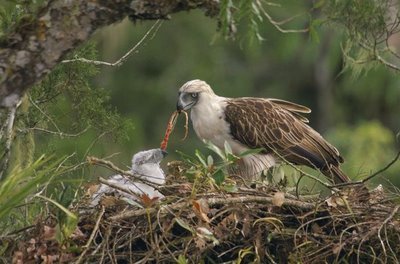
The parents do not regurgitate food, they instead rip meat from their kills to feed the young Eaglet
After copulation the female will lay a single Egg roughly 10-14 days later, once laid the Egg will require a further 60-70 days of incubation which is carried out by both parents in turns which allows the other to feed.
Once the egg has been successfully incubated it will hatch and an Eaglet will emerge, similar to incubation the parents will take turns in sourcing food for the offspring, and the parents have also been observed to offer the Eaglet protection from the sun’s rays as well as the rain by outstretching their wings (the nests are often at the top of the tree canopy).
The young Eaglet fledges at roughly 4-5 months of age but will likely not be able to make a successful solo kill in its first year of life, the parents will continue to care for the juvenile Eagle for an average of 20 months, the young Eagle will remain near its birth territory for up to a year after independence before venturing to claim its own territory.
Due to the long nature of their care Philippines Eagles only breed every 20-24 months which is one of the longest breeding cycles of any bird of prey, this investment in to a single offspring is likely a cause for their population decline as their numbers cannot grow faster than the decline caused from various threats.
Threats to the Philippine Eagle
The main threat to the Philippine Eagle is one that is a threat to countless other animals, not just within the Eagles range, but globally, I am of course referring to deforestation and habitat degradation.
Like many large birds of prey, Philippine Eagles require quite a large home range in order to successfully raise a chick to fledgling age, deforestation of course has an extremely negative impact on the Eagles ability to find food to feed their young, this issue is only exacerbated as breeding pairs are forced in to territorial overlap, the increased competition for food in a consistently decreasing range results in an exponential rise in the likelihood of a juvenile Eagle dying within the first year of its life.
Deforestation is rife throughout the Eagles range, many breeding pairs preferred habitat consists of lowland old-growth forest, this is not good for the Eagles as a large amount of this land has been accumulated by logging companies within the region on 5-10 year lease deals, this poses an issue as it takes on average 35-40 years for reforested land to return to a similar size and stature, as such logging companies have no incentive to partake in reforestation as the trees will never mature within their lease.
The expanse of old-growth forest within the Eagles range has been reduced to just approximately 9220 square kilometres which represents a decline of over 90% since the early 1900’s, whilst the Eagles overall range is estimated at 144,000 square kilometres, deforestation is very much a threat to all Philippines Eagles in existence.
Deforestation not only has an impact on the Eagles by reducing their habitable range, it also contributes heavily to the increased likelihood of weather events such as mudslides and flash floods, forests play an incredibly important role in the water cycle and their removal can have a devastating impact on the terrains ability to process excess water.
With trees removed water enters the ground but is not absorbed or utilised by anything, it accumulates until the ground begins to swell and shift, normally roots would play a major role in not only soaking the water, but also holding the soil in place, in their absence gravity reigns supreme and catastrophic mudslides can cascade and destroy untouched forest-land, this is becoming a more prevalent occurrence, especially in ancient woodlands that have existed in an equilibrium for centuries or even millennia, these events can kill Eagles caught in their path or they can reduce feeding opportunities to a point that the bird may struggle to sustain itself.
Another threat to the Philippines Eagle comes in the form of poaching, it is illegal to intentionally kill an Eagle in the Philippines and if caught a punishment of up to 12 years imprisonment and heavy fines are applicable, whilst this punishment is harsh it has not eliminated the threat, Eagles nesting closer to the forests edge are more likely to be victims of illegal poaching.
Many Eagles are also caught in traps made for ground dwelling animals such as Deer and wild Pigs, the Eagles spend a surprising amount of time on the ground, partly due to the fact that they are apex predators in the region and have no reason to fear ground-based predators, this inevitably leads to them falling victim to snares/traps on a frequent basis, after deforestation and poaching this is probably the next most common cause of death for the Philippine Eagle.
Another speculated threat to the Philippine Eagle is the expanditure of agricultural sites, or more specifically the introduction of foreign chemicals to the Eagles environment through widespread pesticide use, as the Eagles diet is varied they may consume a wide variety of animals that may have came in to contact with chemically treated crops, it is unknown to what extent pesticides have on the health of Philippine Eagles, though it is almost certainly a negative impact and further study in to the chemicals used is required in order to ascertain whether their use could accelerate the Eagles decline.
If you remember a few weeks back I wrote an article about the White-Rump-Vulture which highlighted exactly how consumption of foreign chemicals can result in the rapid decline of a species, it’s clear that incentives need to be offered by governments to ensure that the environmental impacts of agricultural expansion are minimal, though for a country that seems willing to decimate its own forests I won’t hold my breath for a positive outcome.
Conservation Efforts
Conservation of any animal consists of three key factors which are preservation of habitat, education and enforcement of policies, it’s also ideal to have a thriving captive population that can be used for potential reintroduction projects in the future, this is of course not viable for every animal.
For most species it is the preservation of their habitat that will have the most positive impact on their survival as a species, this is particularly true for animals that require a certain biome to hunt effectively, the Philippine Eagle has adapted to a life within the treetops of tall rain-forests and their survival will depend on whether or not the rate of deforestation is heavily reduced or halted entirely.
On the island of Mindanao, the situation is dire, despite there being two separate “protected parks”, Mt Kitanglad and Mt Apo, deforestation continues to threaten animals in the region as illegal logging is still prevalent within the national parks, most notably in the low-land old growth forest areas.
Non-profit organisations are not capable of enforcing and introducing laws to protect forested land, this lies solely with the government of the country in question, the Philippine government has acknowledged the severity of the issue, mainly as they have witnessed an increase in freak weather related events that have been proven to occur due to water erosion, as such reforestation has become a priority, furthermore, agricultural developments can now only be completed if the firm can ensure that the water table is not effected, from a legal perspective this has reduced the expansion of agriculture, though illegal logging continues at a rampant rate.
It is also down to the government to ensure that laws are enforced, and punishments are upheld, however the Eagles range is vast and many individuals are killed accidently through slash-and-burn deforestation and accidental trapping, in times of political instability and economic uncertainty policing of the territories is a nigh on impossible task and the aid of non-profit organisations is required.
There are a number of organisations working to protect the Philippine Eagle either directly or indirectly, the Haribon Foundation is an organisation focused on the protection of Philippine wildlife in a variety of biomes, they also started the Philippine Eagle project in 2014 which focused on conducting biological surveys in the Mt Mingan region to implement a Critical Habitat Management Plan for the Eagle, once developed the foundation will work with local communities and councils to formulate safeguard strategies to aid in the conservation of the species.
Since 2014 the foundation has successfully implemented their plan and as of today they have trained over 75 wildlife enforcement officers, formed three local government units and allowed over 800 students to participate in biodiversity projects, similar projects will need to be conducted in other regions to really classify the project as a success though the foundation relies heavily on donations, should you wish to read more about the Haribon Foundation and/or wish to donate to them you can find the link HERE.
A non-profit organisation that does focus their full attention to the Philippine Eagle is the Philippine Eagle Foundation, the foundation focuses heavily on field research, education and conservative breeding projects.
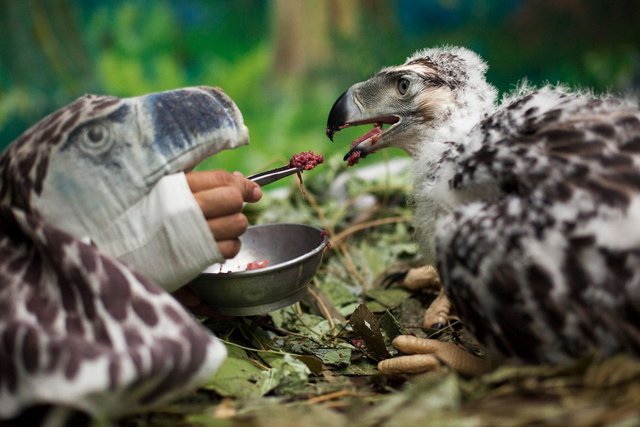
Puppets are used when feeding captive-bred Eaglets so as to avoid them becoming habituated to Humans
Perhaps their biggest success story can be observed in their Philippine Eagle centre which is an 8.4 Hectare area focused on the captive breeding and eventual release of mature animals in to the wild and began successfully breeding the Eagles in the early 2000’s, since then over 30 Eagles have been born at the centre, the foundation was also the first organisation to experiment the release of captive-bred Eagles to the wild, an experiment that met mixed results as the two released specimens died, one from accidental electrocution, the other from illegal poaching.
The foundation states in their mission statement:
Along with saving the eagle and the many animals that share its forest home, the Foundation looks forward to helping fulfil the dreams and aspirations of the millions of marginal income families who also rely on the forest to survive.
In my opinion this is arguably the most important factor in the Eagles survival, sustainability and education must be enacted to ensure that both Humans and wildlife can thrive without detrimentally impacting the other, the foundation produces most of their revenue from tourism, though you can find out more about their projects and donate to them HERE should you feel obliged.
Other notable organisations involved in Philippine Eagle conservation:
Final Thoughts
As is the case with most endangered species, there are a number of good people working to preserve a species, though they are met with countless hurdles that can often make the entire process seem futile, economic prosperity often takes priority over the preservation of the natural world and it’s no surprise that many species have gone extinct with little or no coverage at all, once highlighted the damage is already done and it is often too late.
With the successful breeding programs of the Philippine Eagle Foundation I can say with confidence that the species will remain present, at least in captivity, as for wild populations their survival is on a knife edge as rampant deforestation jeopardises any attempts to enact reintroduction programs as well as letting wild populations rebound, failure to take action could see the Philippines once lush rainforests completely destroyed by 2040.
Sadly, I feel it is only a matter of time before forests themselves become extinct from some regions, and with them many other species that have lived in harmony with their environment for tens of thousands of years, it’s a sad but realistic thought.
Content Sources
- The Haribon Foundation
- The Philippine Eagle Foundation
- Deforestation in the Philippines
- Philippine Eagle Fact File
- Deforestation Impacts
More Endangered Species
If you found this edition of Endangered Species interesting, you may be interested in my previous posts:
- The Ruffed Lemurs
- The Amur Tiger
- The White Rumped-Vulture
- The Yangtze Finless Porpoise
- The Saiga Antelope
- The Javan Slow Loris
- The Kakapo
- The Red Panda
- The Vaquita
- The Amur Leopard
- The Northern White Rhinoceros
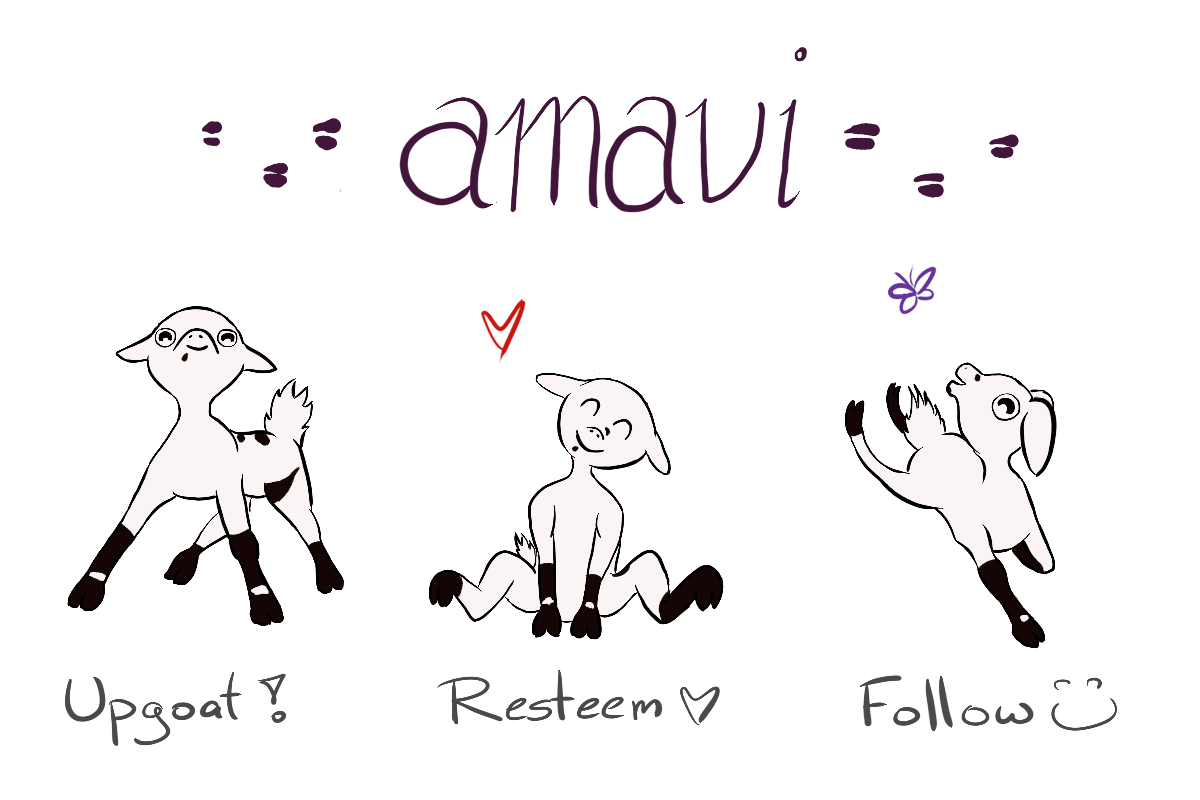

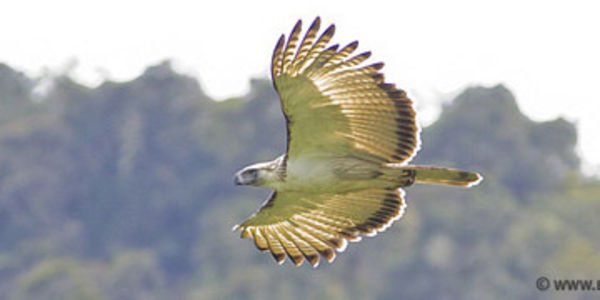
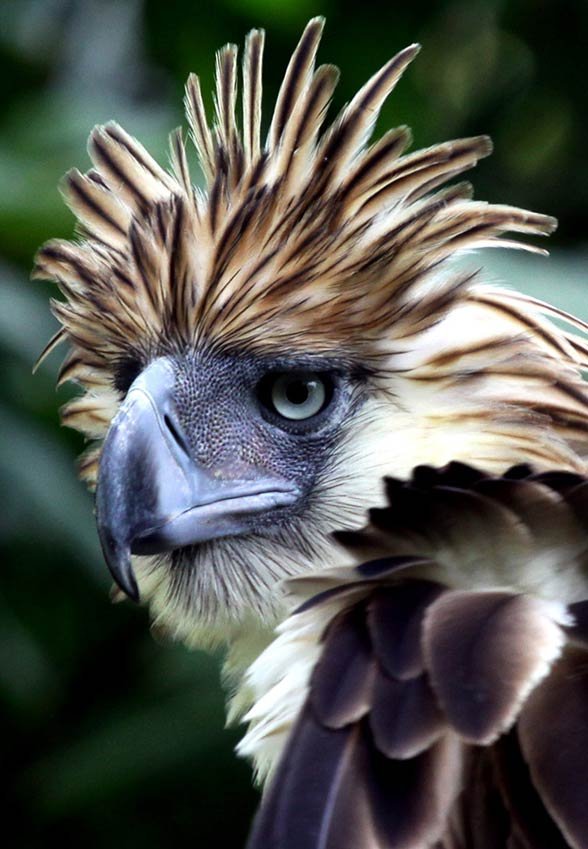
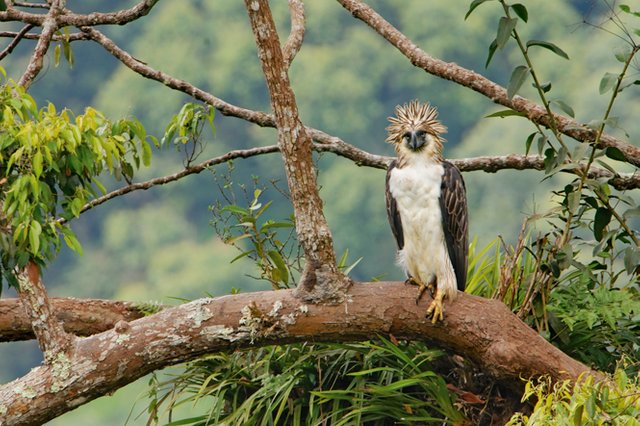
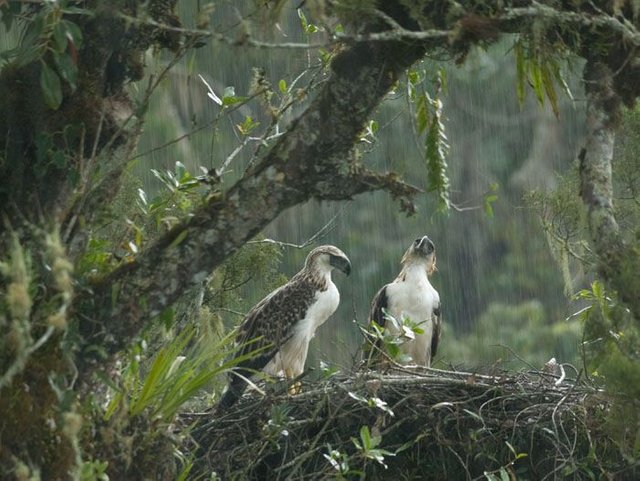

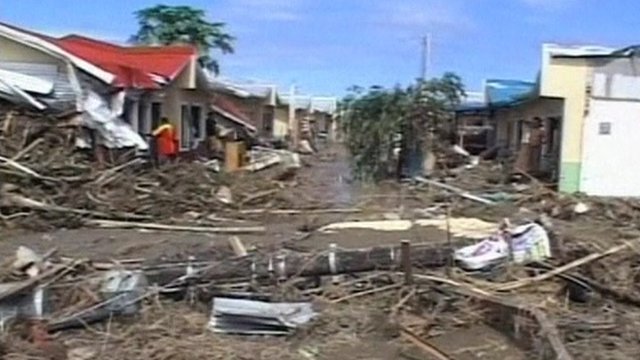
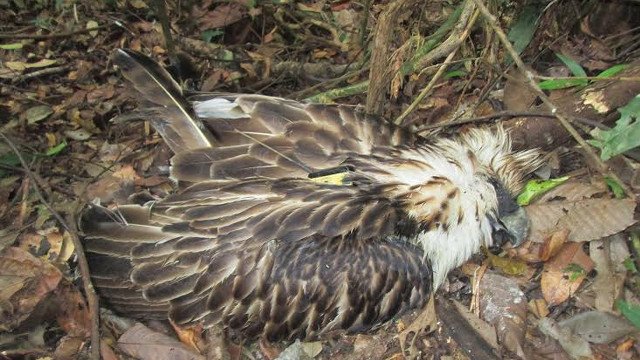
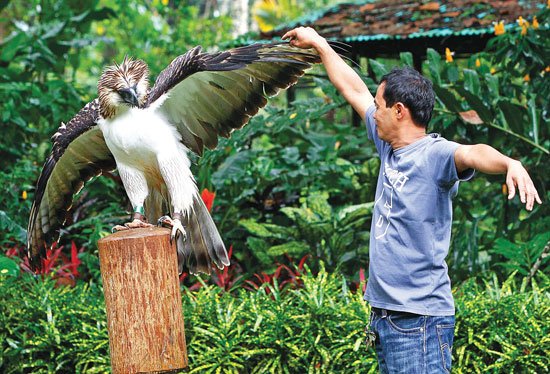
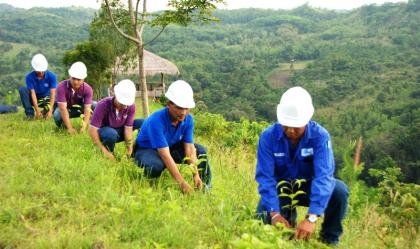
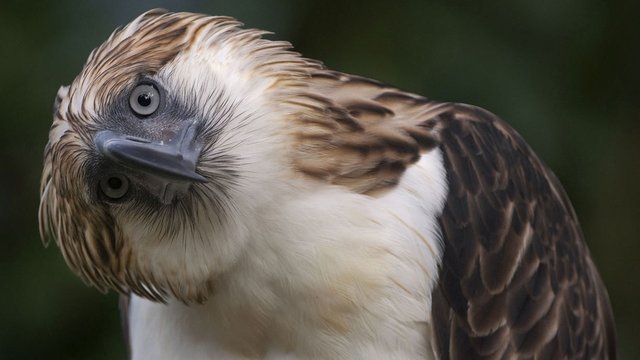
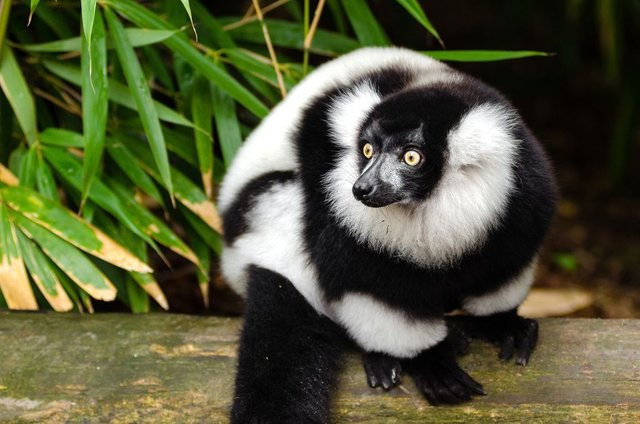
Resteemed to over 14900 followers and 100% upvoted. Thank you for using my service!
Send 0.200 Steem or 0.200 Steem Dollars and the URL in the memo to use the bot.
Read here how the bot from Berlin works.
We are happy to be part of the APPICS bounty program.
APPICS is a new social community based on Steem.
The presale was sold in 26 minutes. The ICO will start soon.
Read here more: https://steemit.com/steemit/@resteem.bot/what-is-appics
@resteem.bot
I'm so sad, our National Bird belongs to endangered species. I just hope they reproduce more than before. I'm from the southern part of the Philippines: Mindanao.
I hope so too, they are a magnificent animal and it would be sad to lose them.
As someone from the region mentioned in the article, do you view deforestation as a major issue? I can only base my opinions from research papers and immediately available data, i'd be intrigued to know if the effects are as noticeable as they appear from the outside?
SO amazing .. i love your post..
how you organized and highlighted everything, its so amazing..
i really enjoy it and also resteemed so my friends can also get to see it too..thanks @amavi for a wonderful post....
am a history researcher and writer too you can come over and take a look at my posts.. nice post ...
The post is really good. This made me to think of the last male white Rhino that died some days back. Most animals are really going into extinction
thank you Amavi for this wonderful post, again !
Great article, one thing I love about this eagle is it's ability to create a crown on their head by moving their head feathers. I hope a lot is done to save this endangered species. Thanks for the awareness
Thankfully a lot is being done and we can at least be confident that a viable captive population can be sustained!
I'm a sucker for any bird that possesses a Crest, this is my personal favourite, i'd probably own one if they didn't have the mental age of a toddler and demanded attention! :D
Is that a parrot ?
Yes, it is an Umbrella Cockatoo
Nice!
Its very sad to see these Beautiful creatures getting endangered..Extinction..
Every now and then I come across a gem on Steemit. This is one of them. I'm going to read your older blogs. I'll take my time because they're so information-dense (but well-written). I've resteemed this and am also sharing on Twitter.
Thank you! I'm always glad when people read my articles and enjoy the content, thanks for the support. :)
I knew about this first Eagle. I just heard them in the first words. Many things are known today. You wrote a lot of texts that I thought I was reading books. It's very nice. Want to know one more thing, do you write books?
Thank You so much for my heart for a educational article.
I don't write books, though if I had the time I probably would, I enjoy writing!
I do try to keep my articles to the point, but I often feel there is so much worth writing about that it would be wrong to not include it, I'm glad you enjoyed reading it!
This is a great article! I hope your eagles make a come back. I know education and getting the word out is key.
Upvote this comment if you appreciate this service.
Reply "REMOVE" if you do not want this comment displayed on your post